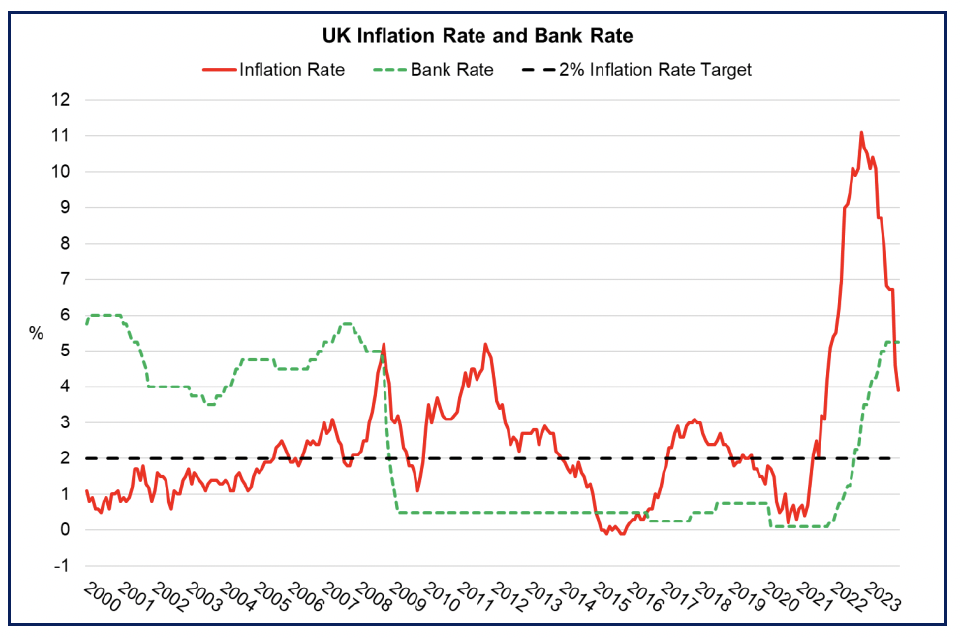Publication - Research and analysis
Scottish economic bulletin: December 2023
Provides a summary of latest key economic statistics, forecasts and analysis on the Scottish economy.
Inflation
Inflation fell to 3.9% in November and is forecast to fall further over the coming year.
- UK inflation fell to 3.9% in November, down from 4.6% in October and from its recent peak of 11.1% in October 2022, and is at its lowest rate since September 2021.[2]
- The largest downward contributions to the annual rate in November came from transport, recreation and culture and food and non-alcoholic beverages.
- Core inflation, which excludes food, energy, alcohol and tobacco, fell to 5.1% in November, down from 5.7% in October, and while it remains elevated, indicates a further easing in inflation pressures from recent months.

- Considering a selection on items, the food and non-alcoholic beverages inflation rate remains elevated, however its annual rate fell for an eighth consecutive month in November to 9.2% (down from 10.1% in July and from its recent peak of 19.1% in March). Motor fuel prices (petrol and diesel) have been on a downward trend since the end of 2022 and are 7.7% and 15.4% lower respectively compared to last year. However, prices have picked up in recent months with the price index for petrol rising 1.6% since August and by 5.4% for diesel. The electricity and gas price index remains 15.4% and 31% lower compared to last year, partly reflecting the fall in the Energy Price Cap in October.

- Overall, annual consumer price inflation rates are on a downward trend, however the price index level remains 21% higher than at the start of 2021, illustrating the rapid increase in the overall price level facing consumers over this period.
- In response to recent inflation and wider economic data the Bank of England’s Monetary Policy Committee (MPC) voted by 6 to 3 to maintain Bank Rate at 5.25% in December, unchanged since August following fourteen consecutive rises since December 2021 when it was 0.1%.[3]

- The Bank Rate remains at its highest rate since 2008 and is expected to remain at restrictive rates to weigh on demand and support the fall in inflation back towards the 2% target in the medium term.
- The Bank’s central forecast in November was underpinned by market expectations that the Bank Rate will average 5.25% until Q3 2024 before gradually declining to 4.25% by the end of 2026.[4]
Contact
Email: OCEABusiness@gov.scot
There is a problem
Thanks for your feedback